 A J. M. Schweighofer's Söhne piano of 1869 | |
| Formerly | Schweighofer und Promberger |
|---|---|
| Founded | 1792 |
| Founder | Michael Schweighofer |
| Headquarters | , Austria |

Schweighofer was a piano manufacturer from Vienna, Austria.
 A J. M. Schweighofer's Söhne piano of 1869 | |
| Formerly | Schweighofer und Promberger |
|---|---|
| Founded | 1792 |
| Founder | Michael Schweighofer |
| Headquarters | , Austria |

Schweighofer was a piano manufacturer from Vienna, Austria.
Schweighofer is one of Vienna's most famous piano houses, as well as its oldest, having been established in 1792 by Michael Schweighofer (1771–1809). The company applied many innovations in the early history of piano manufacture. Schweighofer won the gold medal at the Vienna exhibition of 1845. It has a history of producing highly respected instruments; in 1845, it was granted the status of official piano maker to the Emperor of Austria.
Michael Schweighofer came from Rincha, Bavaria and moved to Vienna, where he opened his piano company in 1792, becoming a citizen in 1801. The only extant instrument made by him survives in the Kunsthistorisches Museum of Vienna. He was married to Anna Wißgill Schweighofer (1780–1822) with whom he had three children.
After Michael Schweighofer's premature death in 1809, the business was carried on by his widow Anna Wißgill Schweighofer (1780–1822) who remarried the piano maker Joseph Promberger. The firm was known as Schweighofer und Promberger. Michael's son, Johann Michael (1806–1852, Vienna), probably learned his craft from Promberger. Then he traveled as a journeyman to England, France and Germany, returning to Vienna in 1832 to carry on the piano business under the Schweighofer name. Johann Michael Schweighofer applied enhanced knowledge and techniques diligently to the piano manufacture, leading to the winning of the gold medal at the Vienna exhibition of 1845. The pianos he built bear the inscription "J. M. Schweighofer [in Wien]"
Subsequently, the business was carried on by the third and fourth generations: After Johann Michael's death in 1852, his oldest son Carl Schweighofer (1839–1905) took over the company. Under his management, the company won further prizes at the German industry exhibition in Munich, 1854, and at the World Exhibition in Paris, 1867. The same year, Carl's brother Johann Michael (1840–1899) joined the company. Their pianos bore the inscription "J. M. Schweighofer's Söhne in Wien". In 1869 the company was awarded the title "k.k. Hof-Pianoforte-Fabrikanten" by the Viennese imperial court and in 1873 it received the Honorary diploma of the Vienna World Exhibition. In 1906, Carl's son Johann took over the company.
In 1911/1912 the J. M. Schweighofer's Söhne company was sold to the piano dealer Bernhard Kohn and his associate Friedrich Karbach, a musician and composer, presumed to be a former employee of Schweighofer. Later they were joined by dr. Oskar Karbach. Around the same time, a presumed descendant of the Schweighofer family opened a parallel factory (Johann Michael Schweighofer GmbH) and built pianos under the Schweighofer name, which led to legal complications. To distinguish their pianos, Kohn & Karbach put sometime after 1920 the Schweighofer Original inscription on their instruments and added the Karbach name on the soundboards. 1938 Karbach and Kohn, who were Jewish, were expropriated under the Nazi regime and the company was subsequently led by Friedrich Ehrbar jr., another Viennese piano maker, until 1940 when it was closed. The other company, owned by the Schweighofer family descendant, also disappeared during World War II.
Schweighofer pianos are still highly respected for their rich, powerful sound and finely crafted construction. Throughout its long history, the company remained committed to the highest standards and incorporated new inventions in their pianos earlier than other Austrian piano makers (such as duplex scaling, Anglo-German and double escapement repetition actions, full cast iron frames etc.) The company produced a relatively small number of pianos per year (usually less than 200), accounting for their rarity today.

The grave of Carl Schweighofer, located on the Zentralfriedhof in Vienna, is featured in the video and on the cover art for the 1981 Ultravox single Vienna.

Johann Georg Albrechtsberger was an Austrian composer, organist, and music theorist, and one of the teachers of Ludwig van Beethoven. He was a friend of Haydn and Mozart.
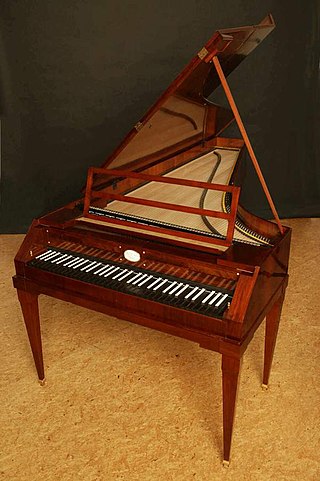
A fortepiano[ˌfɔrteˈpjaːno], sometimes referred to as a pianoforte, is an early piano. In principle, the word "fortepiano" can designate any piano dating from the invention of the instrument by Bartolomeo Cristofori in 1698 up to the early 19th century. Most typically, however, it is used to refer to the mid-18th to early-19th century instruments, for which composers of the Classical era, especially Haydn, Mozart, and the younger Beethoven and Hummel, wrote their piano music.

Johann (Georg) Andreas Stein was an outstanding German maker of keyboard instruments, a central figure in the history of the piano. He was primarily responsible for the design of the so-called German hammer action. Pianos with this hammer action, or its more developed form known as the Viennese action, may be said to be appropriate for the performance of the piano music of Haydn, Mozart, and the early Beethoven.
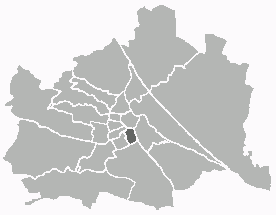
Wieden is the 4th municipal district of Vienna, Austria. It is near the centre of Vienna and was established as a district in 1850, but its borders were changed later. Wieden is a small region near the city centre. After World War II, Wieden was part of the Soviet sector of Vienna for 10 years.
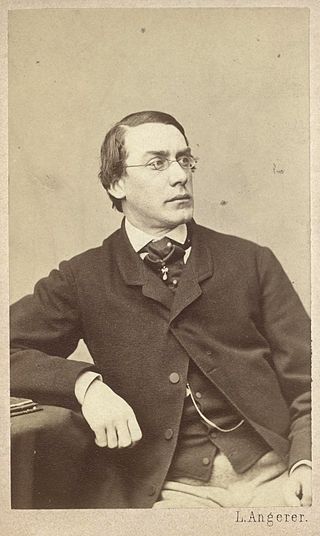
Ernst Pauer was an Austrian pianist, composer and educator.
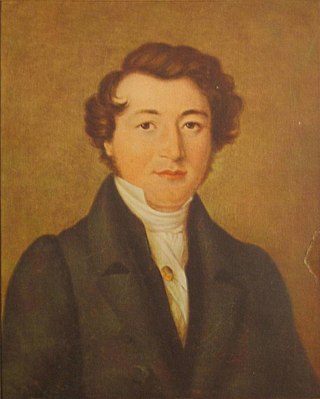
Christian Friedrich Ludwig Buschmann was a German musical instrument maker and inventor, often credited with inventing the harmonica and also the accordion.

Johann Vesque von Püttlingen, born J. Vesque de Puttelange, was an Austrian lawyer, diplomat, author, composer and singer. His full name and title in German was Johann Vesque, Freiherr von Püttlingen.
Americus Backers, sometimes described as the father of the English grand pianoforte style, brought the hammer striking action for keyboard instruments from his master Gottfried Silbermann's workshop in Freiburg to England in the mid-18th century. Unlike the eleven other ex-apprentices of Silbermann who followed him to England and built square pianos with his action, Backers developed Silbermann's action into a reliable, powerful and responsive form that he built into a grand harpsichord case and added two tonal effects – una corda and damper lift – activated by pedals built into the dedicated trestle stand, again his original innovation. This new instrument altered the landscape of English music, causing composers and musicians to consign the plucked string harpsichord and its music to history. It is upon Americus's design that the modern grand pianoforte we know today is based.

The Carltheater was a theatre in Vienna. It was in the suburbs in Leopoldstadt at Praterstraße 31.

Josef Kriehuber was an Austrian lithographer and painter, notable for the high quality of his lithographic portraits. A prolific yet meticulous artist, he made numerous portraits for nobility, well-known personalities, and government officials. Josef Kriehuber left more than 3000 lithographs, with portraits of many people including some of the most illustrious figures of mid-19th century Central Europe.
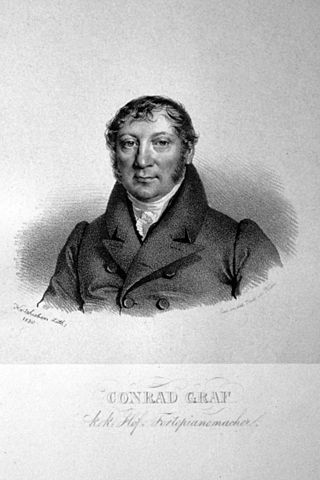
Conrad Graf was an Austrian-German piano maker. His pianos were used by Beethoven, Chopin, and Robert and Clara Schumann, among others.

Gabriel Anton Walter was a builder of pianos. The Grove Dictionary of Music and Musicians describes him as "the most famous Viennese piano maker of his time".

Paul McNulty is a builder of historical pianos, described by the New Grove as "famous for the high standard of [his] instruments." Within the community of builders, McNulty is noted for his efforts to extend the production of historically informed instruments later into history: while he has built many fortepianos in 18th-century style, he has also progressively sought to span the gap between the fortepiano and the fully modern piano that emerged around the last third of the 19th century. The expanding diversity of McNulty's productions has thus helped "provide an opportunity to extend keyboard performing practice to include the piano repertory of the 19th century".
Johann Georg Stauffer was an Austrian Empire luthier and the most important Viennese luthier of his time.

Johann Baptist Krall was an Austrian composer, conductor, music editor/arranger, and member of the board of directors of the Wiener Singverein of the Gesellschaft der Musikfreunde.

Schiedmayer is the name of a German Instrument-manufacturing family. Established in 1735 as a keyboard instrument manufacturer, it is still active today as a family business.

Johann Lorenz Schiedmayer was a German piano maker.
Johann Peter Fritz was a piano maker based in Vienna. He was one of Vienna's most distinguished piano makers. His pianos were valued for good quality and melodiousness. It is known, that Giuseppe Verdi was very fond of Johann Fritz's pianos and used the Viennese 6-pedal Fritz piano from the time of Rigoletto in 1851 to Aida in 1871. This exact piano can be seen in the composer's Villa Verdi in Province of Piacenza in Italy.

The Wiener Männergesang-Verein is a men's choir in Vienna, Austria, founded in 1843. The choir has regularly appeared with the Vienna Philharmonic, and has performed worldwide. Notable composers, particularly Johann Strauss II, have composed music for the choir.
![]() Media related to Schweighofer at Wikimedia Commons
Media related to Schweighofer at Wikimedia Commons